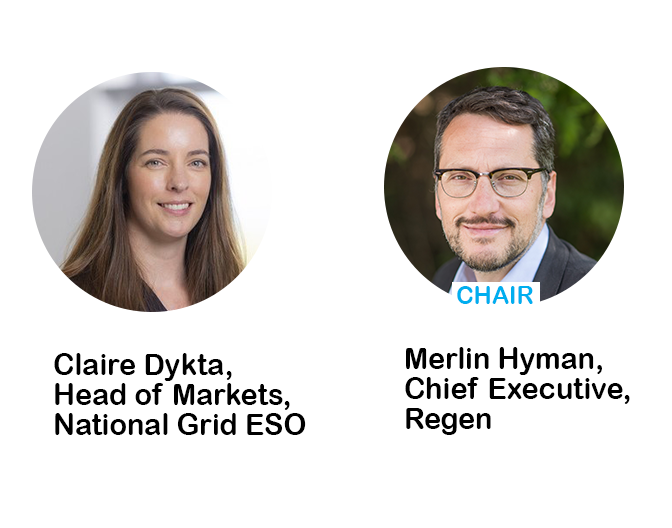
TUESDAY 24 JANUARY – IET LONDON, SAVOY PLACE
25-26 JANUARY – ONLINE VIA ZOOM AND THE REGEN WEBSITE

The ESN Conference is established as one of the most popular industry events in the calendar, attracting over 600 delegates this year and leading the debate on the future of electricity storage. All while drawing on the expertise of the 61+ ESN member organisations and its strong voice with government.
With BEIS estimating 30-50 GW of flex needed on the electricity system by 2030, electricity storage is established as key to a zero carbon energy system. At a time of turbulent energy policy, the ESN Annual Conference brings together leading players in the sector and policy makers to debate the policy and regulatory framework, the revenue stack, and the business models that can unlock the billions of investment required in this vital asset class.
- We held an in-person half-day conference and drinks reception at IET in London to debate key topics, including the impact of recent government policy, developing a sustainable investment model, and how we unlock the pipeline of electricity storage projects.
- This in-person event was then followed by two days of online webinar sessions, diving into key questions around grid connections, skip rates, fire safety and long-duration energy storage.
Scroll down to see the speaker line-up, the agenda, replays of the online content and details about ESN membership!
 The in-person part of the conference kicked off with an opening address, keynote speech and panel sessions, along with networking opportunities and a drinks reception on the IET terrace.
The in-person part of the conference kicked off with an opening address, keynote speech and panel sessions, along with networking opportunities and a drinks reception on the IET terrace.
14:00 Welcome from Chair – Rachel Hayes, Associate Director at Regen
14:10 Keynote address
14:10 Net Zero Policy Update – Sophie Boldon, Head of Smart Energy at BEIS
14:20 ‘A Day in the Life’ of our future decarbonised energy system – Zeroing in on storage – Sophie Whinney, Energy Analyst at Regen
14:35 Panel Session: How is the storage revenue stack evolving as we transition to a net zero power system?
BEIS along with the CCC and National Grid ESO project that a 2035 net zero power system is likely to need around at least 25 GW of storage, totalling over 100 GWh of stored energy. At least 20 GW of this is likely to be in the form of batteries. At a time of turbulent energy policy, this session brought together leading players in the sector and policy makers to debate the policy and regulatory framework, the revenue stack, and the business models that can unlock the billions of investment required in this vital asset class to deliver our net zero ambitions.

15:45 Break
16:30 Fireside chat: The role of storage in operating a net zero power system
At this ‘fireside chat’ session, Claire Dykta, Head of Markets at National Grid ESO was interviewed by Merlin Hyman, Chief Executive at Regen. The discussion explored the role of electricity storage in operating the net zero power system of the future.

17:00 Networking drinks reception on the IET terrace

12:00-13:00 Co-location – unpicking the challenges and opportunities
Co-location of storage with renewable energy generation or other technologies is a growing phenomenon in the UK and elsewhere. A growing proportion of projects already operating and in the development pipeline are co-located. In this session discussed how we define co-location, the different optimisation challenges it creates, and how this development model will be deployed in 2023.
15:00-16:00 Response service saturation – where do future revenues come from?
As Dynamic Containment and other frequency response services become saturated, which deeper markets and services will become more important? Storage is already providing value in The Balancing Mechanism and wholesale energy markets. How can this be developed and which other markets and services will be developed that electricity storage can deliver in? In this session looked at the current revenues available to electricity storage, how they have varied over time and look to the future to the role of electricity storage in a 2035 energy system.
10:00-11:00 Enabling Long Duration Energy Storage for a net zero system
Longer duration energy storage has been identified as a key technology sector to enable the transition to a net zero energy system. Whilst shorter duration storage projects/technologies are supporting the operability of the electricity system today, the future needs of our electricity system will require storage technologies that can store provide services for longer durations to address periods when the wind doesn’t blow. This session examined the emerging roles, use cases and operating modes for long duration storage in a net zero energy system and how projects and technologies can be developed to access the value it can deliver – building on the work of the ESN’s Technology and Innovation Working Group to address these challenges with leading policy makers and businesses.
12:00-13:00 Fire safety innovation and best practice – what does the future hold?
Fire safety has risen to the top of the industry agenda in the last couple of years as the UK electricity storage market matures, insurers and funders become more knowledgeable and policy makers and planners focus on the issue. A whole systems approach is needed across the supply chain as well as close integration with first responders. In this session, we heard about the latest industry best practice, plans from government on further developments, and how we can work as a sector to increase transparency and learn from existing incidents – domestically and internationally.
15:00-16:00 Grid connections – is a revolution or evolution on the horizon for electricity storage?
The storage pipeline is rapidly developing, reaching over 42 GW in October 2022, as developers secure connection agreements for increasingly large batteries. However, constraints on the transmission network are leading to connection dates as far out as 2038 and grid capacity is now a significant barrier to a net zero power system. This session looked at the connection reforms now underway and whether they can go further and faster. The session considered how transmission and distribution networks can work more closely together, how modelling assumptions for storage can be reformed and opportunities for storage connection problems to be addressed by using markets mechanisms.
The full line up of our incredible speakers:

About the Electricity Storage Network
The ESN is a membership organisation, committed to creating an environment in which storage can flourish, ensuring that regulations and markets work for all types of storage, without favouring one particular technology.
Established in 2008 as the UK industry group dedicated to electricity storage, it includes a broad range of electricity storage technologies and members, such as electricity storage manufacturers and suppliers, project developers, users, electricity network operators, consultants, academic institutions, and research organisations.
ESN Two Pager 2023The ESN is managed by Regen. If you are interested in joining the ESN please email Olly Frankland, ESN Lead, at ofrankland@regen.co.uk.




